January 26, 2015
TRICHY to MADURAI - 161Km
The Madurai Residency 2758Rs ($45.69)
In room AC, wifi, including a good breakfast
Damn, Damn the Traffic Jam
We pulled out of our Trichy hotel bound for Madurai, a good stop-over distance on our way to the southern most tip of India. Yep! It has another ancient (medieval) temple and a UNESCO recognized one at that. We planned to get out to the toll road quickly and take the fast way.
We joined the melee and were making good progress through town when we came upon a traffic barrier blocking one of the cities main arteries. Traffic police were making sure everyone went around. But 'around' was on dirt lanes through ramshackle neighborhoods and there must have been thousands of us jammed in the small space like traffic leaving a large stadium after a big game or rock concert. It took us 45 minutes to get 2 kilometers. We eventually had to go the wrong way, into oncoming traffic, on a frontage road, to get to the highway on-ramp. No worries, everyone was doing it. We were going like the Indians!
Sailing Away
We got onto the good road with smooth asphalt and light traffic. Our motorcycle, with the two of us and our luggage, cruises along nicely at 65 kph. It seemed fast at the time but that translates to a mere 40 miles per hour!
We drove across a broad semi-arid plain with not a lot of development. Farm country still. It was clear weather and hot. But the breeze created by our speed kept us cool and comfortable.
Roads became congested again as we rolled into Madurai, a city of 1 miliion. Our GPS came through again, guiding us along the unplanned layout of the sprawling city. We did cut through a market and went the wrong way on a one-way street briefly to shave a few kilometers off the google route. Madurai Residency is solid mid-range western style hotel with some upscale features. But still it was built with Indian style, all-in-one, bathrooms.
January 27, 2015 - SIGHTSEEING IN MADURAI
Searching the Alleys for Vodafone!
Vodafone has been sending promotions offering discounted data plans and Dave loves a discount! Our first 30 day plan is almost over and he wanted to go the official store and have them set him up for the next 30 days. Google maps showed an office in the center, in the direction of the Royal Palace. The route took us off the busy streets into lanes too narrow for cars. A motorcycle would make its way through, now and then, but mostly there was room for pedestrians only. We'd occasionally see people at home inside their living spaces but most of the ground floors were used for businesses; tiny food shops, laundries, tailors, gold stores, etc. They were compact versions of the same type of businesses you'd see on the main boulevards. We got the sense we were peeking behind a curtain into 'real' India in this city of over a million.
We got to the spot where the GPS showed the Vodafone store. It was not there. Nothing around looked like they had anything to do with phones - a dry goods warehouse, unmarked doors, a baker - and no Vodafone. We asked around and were sent to the main street where there were several shops that could top up our Vodafone credit, but not an actual Vodafone outlet. A friendly young kid approached practicing his English. Sure, why not ask for his help with the data plan? Dave showed him the messages on his phone and he translated what we wanted to his friend at a small shop that also did phone top ups. It ended up taking 20 minutes. But together, they figured it out and got us on the discounted plan. They were happy to help the dumb foreigners out.
Thirumalai Nayak Palace
Just around the corner was the Royal Palace which was built in 1636 by King Thirumalai Nayak who ruled Madurai from 1623–59. It was closed for lunch and we had to wait a bit to get our entry tickets. As we waited in line, three fly-weight Indians squeezed in front of us. I guess the 12-inch gap we had in front of us was too much. We gently pointed out that the end of the line was 'back there'. They replied 'Oh, you are in line? Sorry!' They left us and proceeded to burrow their way into the lump of people waiting at the other side of the ticket window.
The Palace entry leads immediately to an open air pavilion. It is surrounded by a raised level with pillars and ornate stucco work on the upper walls, cornices, and ceilings. That part is all quite fresh and new, having been refurbished 'a few years ago.' Adjacent is a large indoor dance hall with some art pieces and statues displayed. Beyond that is the museum room with a small number of 300 year old labeled sculptures. It was nothing particularly well presented or interesting.
The Royal Palace, or what is left of it, does not at all seem like a place where a King and his entourage would have lived - no bedrooms or kitchens etc. It seemed like an events venue for wedding or other ceremonies. It turns out that King's son tore most of the original palace down and plundered its contents. He had plans to build his own palace. Those plans never materialized. Lord Napier partially restored the palace in 1866-72.
While once considered one of the wonders of the South, today the Royal Palace is a very minor site, just good enough to round out the day in anticipation of the UNESCO recognized temple less than 2 km to the north..
Meenakshi Amman Temple (also called Meenakshi Sundareswarar Temple)
We had to wait for the re-opening of this historic 380 hundred year old Hindu temple. A temple located here dates to antiquity but the present structure was built between 1623 and 1655.
We went to the roof of a nearby antique shop to get a high view of the enclosed city-like temple complex. We saw the tops of the golden domes but most of the complex was obscured by high walls and trees. Then, we put our cameras in the storage room and went through metal detectors to enter the temple grounds.
Once inside, we discovered there was another entry fee to reach inner temple. And another fee to take (forbidden) photos. We had left or cameras behind but were able to take pictures with the cell phone , for a small fee, which we presume was a bribe to look the other way. Once in awhile, someone would walk up and ask us to pay a camera fee. We'd shrug and insist that we 'already paid'.
The temple has 14 gopurams (towers), two golden domes, shrines and inner sanctums to the deities, and an estimated 33000 sculptures. The temple gets 15,000 visitors per day, mostly Indian tourists, but not so many during our visit - thank God.
We had seen so many exquisite ancient temples in the past week that we did not go gaga over this one. Eventhough we made a fairly quick walk through, and didn't bother exploring all the nooks and crannies, we have to confess, this would be an interesting stop for anyone not already desensitized by all the other superb temples in southern India.

 Madurai, Tamil Nadu, India
Madurai, Tamil Nadu, India

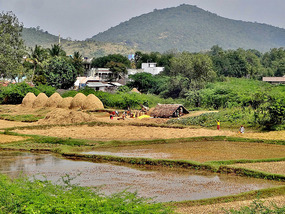

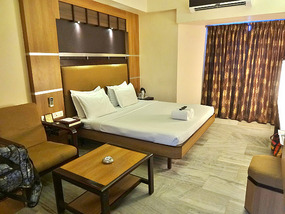
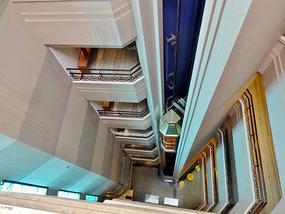
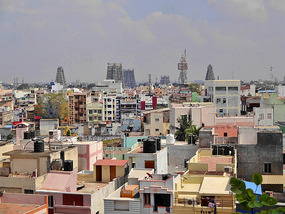
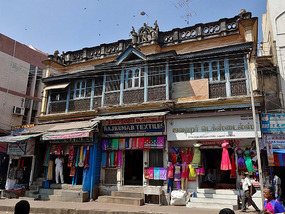
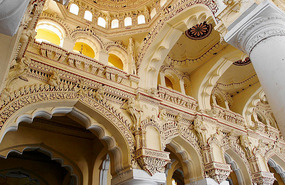
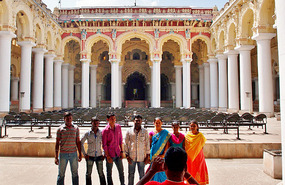
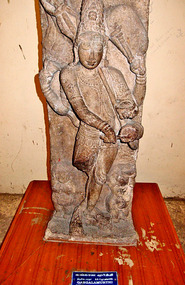
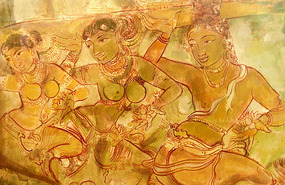
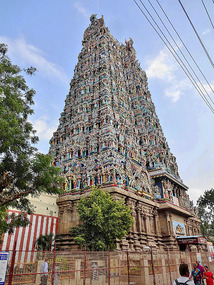
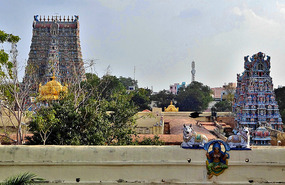
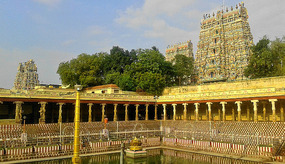
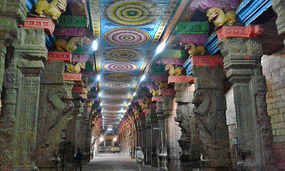
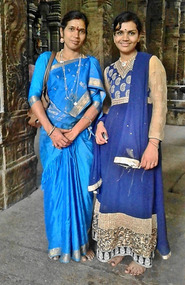
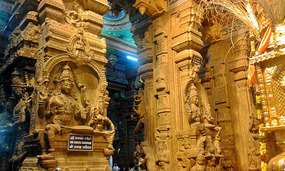

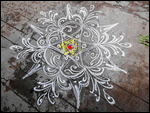
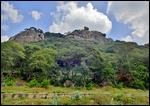
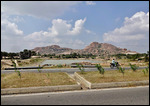
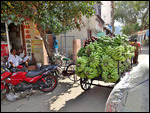
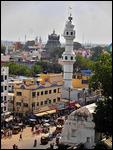
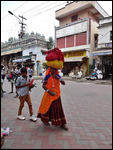





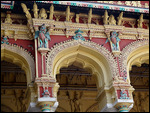
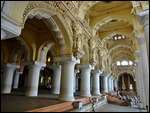

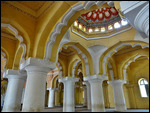

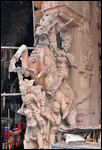

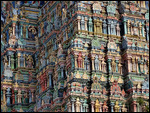



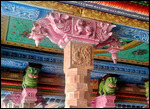



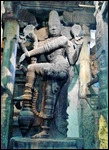


2025-05-23